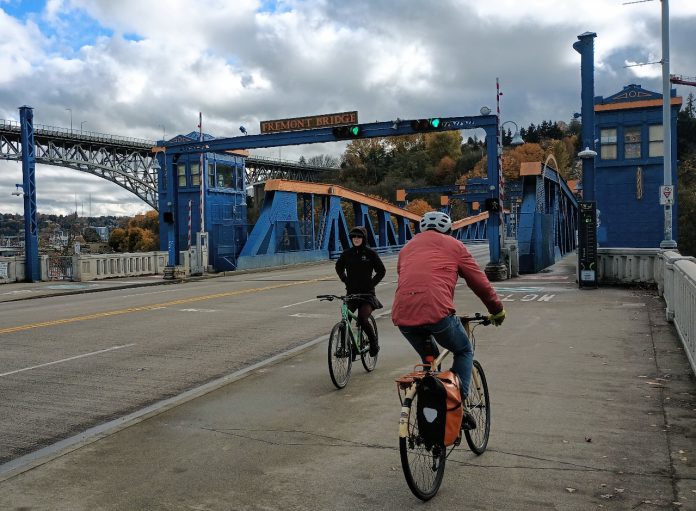
Seattle’s climate plan calls for doubling bicycling, but SDOT is not building its bike facilities to handle the load.
To bike to Climate Pledge Arena, home of two of Seattle’s professional sports teams as well as dozens of concerts per year, from Downtown Seattle, people using the city’s flagship protected bike lane on 2nd Avenue are routed around the west side of Seattle Center via 1st Avenue N. To make that connection via Broad Street, riders must take a left turn by entering the intersection at 2nd and Broad and waiting in a painted box for the light to turn green. That box holds two bikes, three with a lot of effort. If a fair number of people try to make the turn at the same time, they have to decide whether to hang into the intersection as drivers turn left from 2nd Avenue onto Broad Street, or wait for the next light cycle.
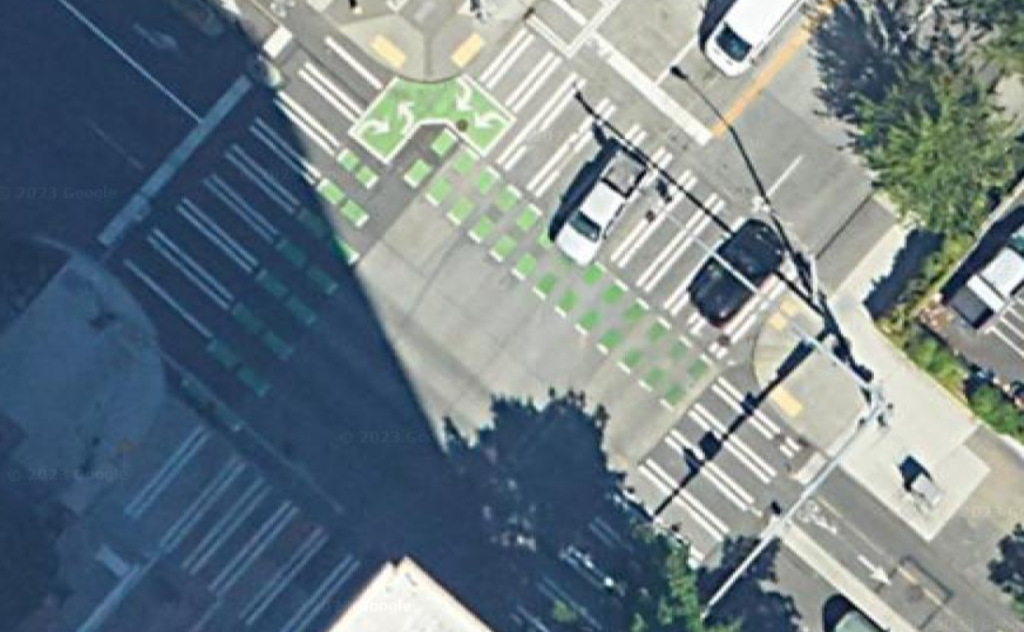
With the theoretical capacity to move thousands of users per hour, the bike lane’s actual capacity is limited by this design, mirrored in a number of other new facilities around the city. It’s one small example of a constraint on the system that the City of Seattle expects to carry 7% of trips in the city — 350,000 per weekday — by 2030, as laid out in the Seattle Department of Transportation’s new Climate Change Response Framework. But while the design of bike boxes will absolutely play a small role, there seems to be other, larger considerations looming that look to limit the true potential of the city’s bike network as it continues to grow.
The sizes of bikes seen on our streets are also growing as cargo bikes become more popular, but the design standards for the facilities those types of bikes use hasn’t been able to keep up.
Last week, the Seattle Department of Transportation (SDOT) released its earliest design concepts for what could be the final “Missing Link” of the Burke-Gilman Trail through Ballard. While the direct route along Shilshole Avenue NW to Market Street remains tied up in litigation, Councilmember Dan Strauss was able to secure buy-in from the Harrell administration to fully sketch out at a route that uses 17th Avenue NW and Leary Avenue NW, one that Strauss has long advocated for, predating his time on the city council.
The designs feature a 10-foot multiuse trail along the busy Market Street and Leary Ave sidewalks, with no buffer between them. At intersections like Ballard Avenue NW and 22nd Avenue NW crosswalks will be raised, but the full combined width of the trail and the sidewalk will narrow down at the crossing, adding to conflicts between people walking and biking along the stretch.
If Seattle has bike superhighways, they are the Burke-Gilman Trail and its more hilly south-end counterpart, the Chief Seattle Trail. Yet here, SDOT proposes using its minimum recommended width for a two-way bike facility, 10 feet, and is disregarding its own design standards, which call for a buffer between walking and biking space for on-street bike facilities, to reduce conflicts. A connection first envisioned in the 1970’s would be implemented with some serious corner cutting.
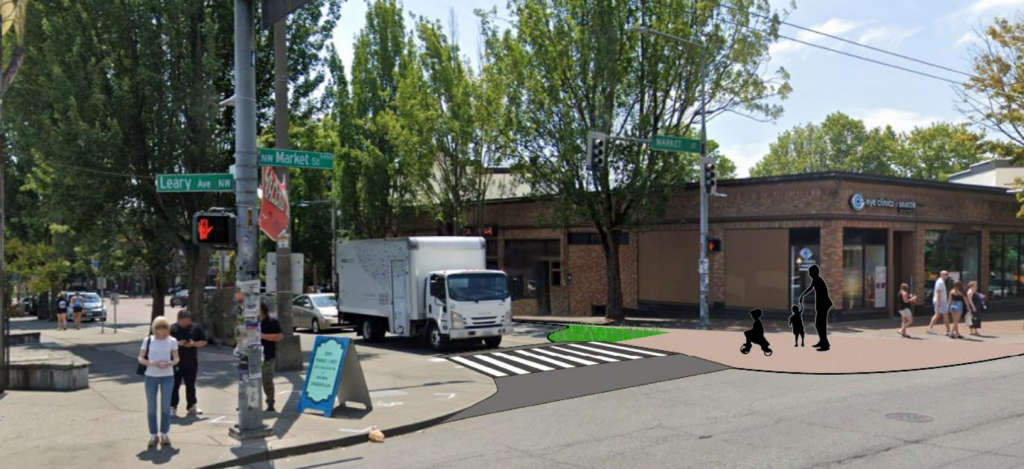
Tom Fuculoro at the Seattle Bike Blog put it very well while covering the design flaws here, which look to cram the people who should be most prioritized on Market Street into one narrow area. “All these trade-offs and compromises are happening within the already-limited walking realm,” Fuculoro wrote last week. “But why are engineers so focused on preserving a four-lane design for a street running through a major business district with such high levels of foot traffic? Instead of pushing compromises onto the walking, biking and transit user spaces (not to mention the trees), let’s see some design ideas that utilize some of the 51 feet of roadway space.”
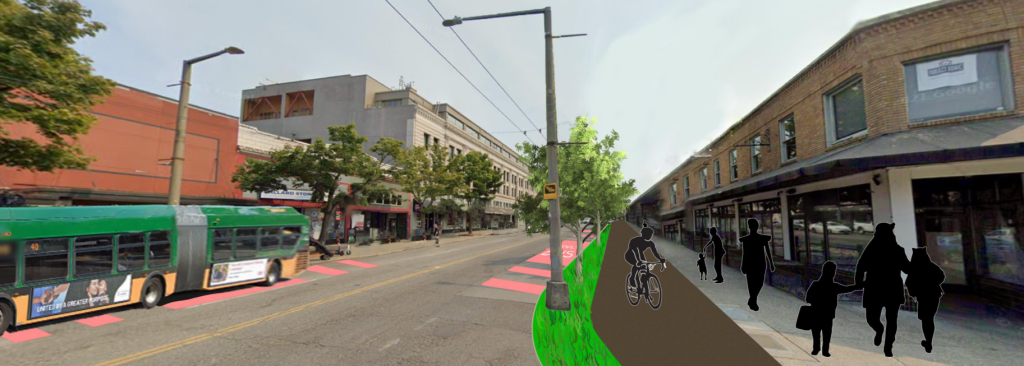
While the 17th and Leary Way alternative for the Burke-Gilman Trail looks poised to move forward before the Shilshole route, ultimately the city will need to make both routes safe for people on bikes to achieve those ambitious mode share goals. This new route isn’t actually a substitute for anything, and having 350,000 bike trips traversing the city every day means it will be even more essential for conflicts to be reduced through industrial areas like Ballard’s maritime zone.
Downtown, on some of the most important bike facilities in the entire city, upgrades are going into place now that finally add concrete protection between drivers and people on bikes and that also fill in some incredibly key gaps. The upgrades are pricey, funded by a combination of dollars from the Seattle waterfront local improvement district and contributions from the new Seattle Convention Center in exchange for public land. And yet constraints will remain in place that cap the capacity of the system and make hopping on a bike less attractive.
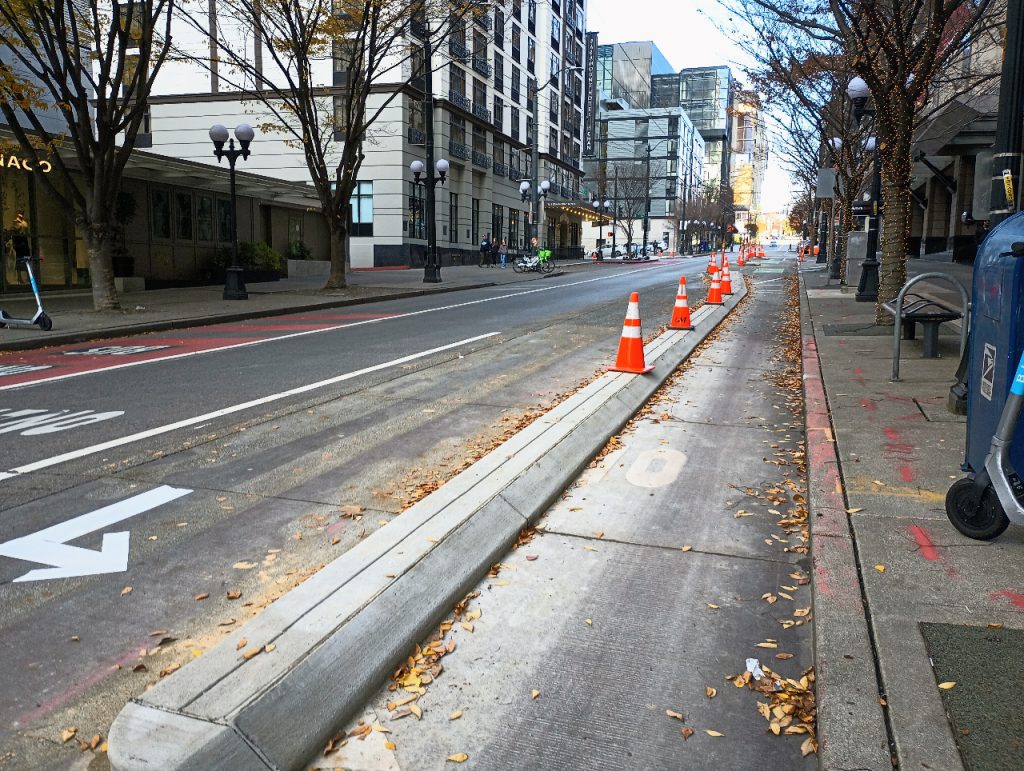
A bike route between Capitol Hill and Pike Place Market is one that clearly needs to accommodate a lot of riders. And yet the protected bike lane being installed right now on Pine Street varies quite a bit in terms of its width on different blocks downtown. Between 7th Avenue and 6th Avenue it narrows to about four-feet wide, raising questions about the city’s ability to maintain it with the electric bike lane sweeper.
A photo submitted by a reader shows their cargo tricycle, which comes in at a little less than three-feet wide, only able to fit in the new lane with a few inches of clearance on either side.
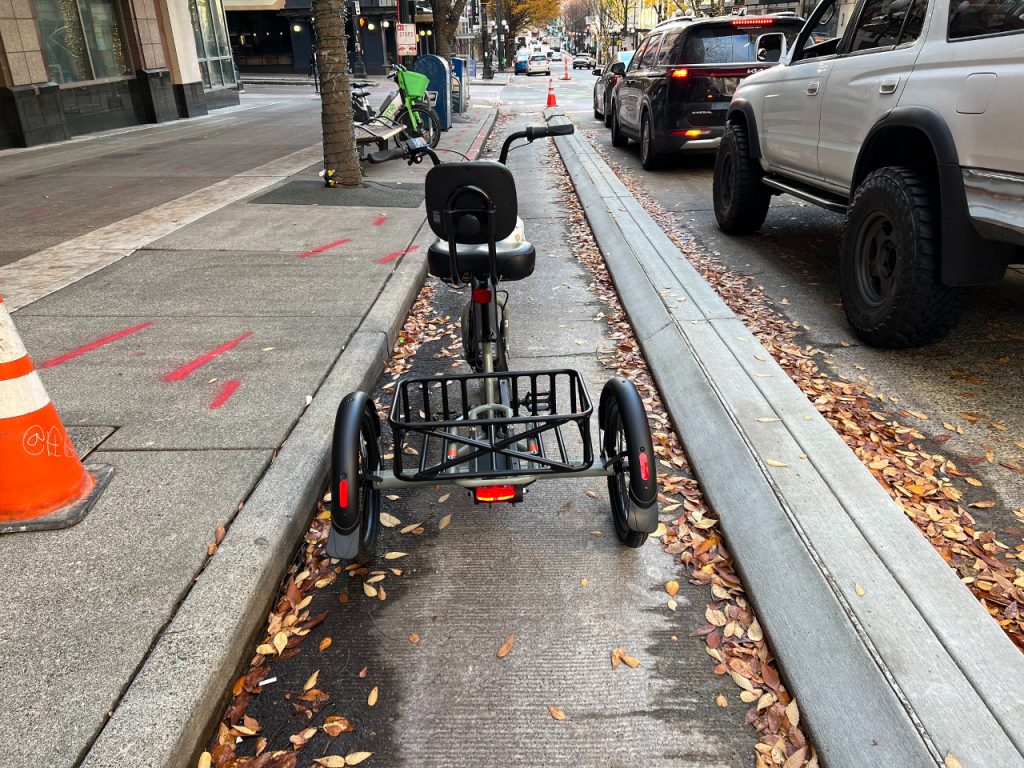
The bike lane here is so narrow in order to accommodate a bus lane, a through travel lane, and a left turn lane. The street users that are given street space will be the street users that fill the space, for better and for worse.
These are just a few recent examples. The new Alaskan Way bike lane being constructed as part of the $781 million revamp of the city’s front door is perhaps the absolute best one — if ever there was a time when Seattle had both the available space, funding, and vision to build a bike facility able to handle the future of the city, it was here. And yet as it continues taking shape, its design — and therefore its potential — is absolutely scaled-back from what was promised initially, much less what it could have been.
Seattle’s urban design manual, Streets Illustrated, is due for an update: That update be an opportunity to leave the idea of “minimum” standard widths behind and push the city to be more forward-thinking about its bikeway (and sidewalk) width standards, with the goal of full alignment with lofty goals laid out in places like the Climate Change Response Framework. Otherwise, we’re intentionally hamstringing the next set of leaders who will need to face these same issues, and causing the hard-fought dollars that go into building these projects to fall short of their full potential.
Ryan Packer has been writing for The Urbanist since 2015, and currently reports full-time as Contributing Editor. Their beats are transportation, land use, public space, traffic safety, and obscure community meetings. Packer has also reported for other regional outlets including BikePortland, Seattle Met, and PubliCola. They live in the Capitol Hill neighborhood of Seattle.

